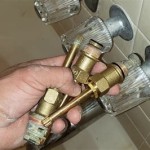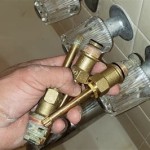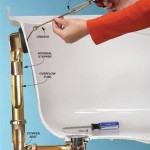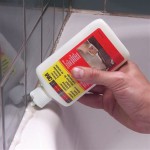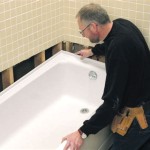Replacing a Bathtub with a Shower Enclosure: A Comprehensive Guide
The decision to replace a bathtub with a shower enclosure is a common bathroom remodeling project driven by a variety of factors. These factors can range from accessibility concerns and space limitations to aesthetic preferences and lifestyle changes. This article offers a detailed examination of the considerations involved in such a project, including planning, design choices, installation processes, and potential challenges.
Before embarking on the replacement process, a thorough assessment of existing bathroom conditions is essential. This includes measuring the current bathtub's dimensions, evaluating the plumbing configuration, and inspecting the surrounding wall and floor surfaces for potential damage or structural issues. A clear understanding of these factors will inform the selection of a suitable shower enclosure and prevent unforeseen complications during installation.
Budgeting is another crucial aspect of the planning phase. The cost of replacing a bathtub with a shower enclosure can vary significantly depending on several variables: the complexity of the plumbing adjustments, the type of shower enclosure selected, the choice of tiling, and whether professional installation services are employed. Obtaining multiple quotes from qualified contractors can provide a realistic estimate of the overall project expenses.
Key Point 1: Assessing the Bathroom Space and Needs
The available space within the bathroom significantly influences the type and size of shower enclosure that can be installed. Small bathrooms may benefit from a corner shower enclosure or a sliding door enclosure, maximizing floor space. Larger bathrooms offer more flexibility, allowing for larger walk-in showers or enclosures with multiple showerheads. The needs of the household also play a critical role in the decision-making process. Households with elderly members or individuals with mobility limitations may prioritize a walk-in shower with a low threshold or grab bars for enhanced safety and accessibility.
Furthermore, the overall aesthetic of the bathroom should be considered. The shower enclosure should complement the existing décor and contribute to the desired style. Options range from sleek, modern frameless enclosures to more traditional framed enclosures with decorative hardware. Careful consideration of these factors will ensure that the new shower enclosure is both functional and visually appealing.
Beyond spatial and aesthetic considerations, the existing plumbing infrastructure must be evaluated. The location of the drainpipe and water supply lines will influence the complexity and cost of the installation. In some cases, adjustments to the plumbing may be necessary to accommodate the new shower enclosure, particularly if the drain location differs from the existing bathtub drain. These modifications should be performed by a licensed plumber to ensure proper functioning and prevent leaks or other plumbing issues.
Proper ventilation is also crucial, both for comfort and to prevent moisture buildup that can lead to mold and mildew growth. If the existing bathroom lacks adequate ventilation, consider installing or upgrading a ventilation fan. The fan should be appropriately sized for the bathroom's square footage and should vent to the outside of the house.
Key Point 2: Selecting the Right Shower Enclosure
The market offers a wide variety of shower enclosure options, each with its own advantages and disadvantages. Common types include framed enclosures, frameless enclosures, semi-frameless enclosures, corner enclosures, neo-angle enclosures, and walk-in showers. Framed enclosures are typically the most affordable option and offer good structural support. However, the frames can be more difficult to clean and may detract from a modern aesthetic.
Frameless enclosures provide a sleek, minimalist look and are easier to clean due to the absence of frames. However, they tend to be more expensive than framed enclosures and require thicker glass for structural stability. Semi-frameless enclosures offer a compromise between the two, featuring minimal framing while still providing adequate support. Corner and neo-angle enclosures are designed to fit into corners, maximizing space in small bathrooms. Walk-in showers offer easy access and a modern look, but they may require a larger bathroom space.
The choice of shower door is another important consideration. Options include sliding doors, hinged doors, and pivot doors. Sliding doors are ideal for small bathrooms as they do not require extra space to swing open. Hinged doors swing outward and offer a wider opening, but they require more clearance. Pivot doors offer a similar function to hinged doors but pivot on a central axis. The choice of door type should be based on the available space and user preference.
The material used for the shower enclosure also plays a significant role in its durability, appearance, and maintenance. Glass is the most common material, with options ranging from clear glass to frosted glass to textured glass. Clear glass offers a seamless look, while frosted glass provides privacy. Textured glass adds visual interest and can also help to conceal water spots. Acrylic and fiberglass are alternative materials that are less expensive than glass but may not be as durable or aesthetically pleasing.
Key Point 3: Installation Process and Potential Challenges
The installation of a shower enclosure involves several steps, including demolition of the existing bathtub, preparation of the shower base, installation of the enclosure walls and door, and connection of the plumbing fixtures. Demolition should be performed carefully to avoid damaging surrounding walls and flooring. The shower base should be level and properly sloped to ensure adequate drainage. The enclosure walls and door should be securely fastened to the surrounding walls and floor.
One of the primary challenges in replacing a bathtub with a shower enclosure is ensuring proper waterproofing. Leaks can lead to water damage and mold growth, so it is essential to seal all seams and joints carefully. Silicone caulk is commonly used for this purpose, but it should be applied correctly and regularly inspected for signs of deterioration. A waterproof membrane should also be installed behind the shower walls to provide an additional layer of protection.
Plumbing adjustments can also present challenges. If the existing plumbing configuration is not compatible with the new shower enclosure, modifications may be necessary. This can involve relocating the drainpipe, adding or moving water supply lines, or installing a new shower valve. These tasks should be performed by a licensed plumber to ensure that the plumbing system functions correctly and complies with local building codes.
Tiling the shower walls and floor is another important aspect of the installation process. The tiles should be properly installed to create a waterproof surface that is easy to clean and maintain. Grout lines should be sealed to prevent water penetration. The choice of tile can also impact the overall aesthetic of the shower enclosure, so it is important to select tiles that complement the overall bathroom décor.
Finally, proper ventilation is essential to prevent moisture buildup and mold growth. If the existing bathroom lacks adequate ventilation, consider installing or upgrading a ventilation fan. The fan should be appropriately sized for the bathroom's square footage and should vent to the outside of the house.
Throughout the installation process, it is important to adhere to local building codes and regulations. These codes are designed to ensure that the installation is safe and meets minimum standards for quality and performance. Obtaining the necessary permits before starting the project can help to avoid potential fines or delays.
Choosing to undertake a DIY installation versus hiring a professional is a significant decision. While DIY installation can save money, it requires significant skill and experience. Errors in installation can lead to costly repairs and potential damage to the bathroom. Hiring a qualified contractor ensures that the job is done correctly and efficiently, and it provides peace of mind knowing that the installation is backed by a warranty.
The selection of appropriate shower fixtures also contributes to the overall functionality and aesthetic of the shower enclosure. Showerheads, faucets, and temperature control valves are available in a wide range of styles and finishes. Consider factors such as water pressure, spray patterns, and ease of use when selecting these fixtures. Some showerheads offer multiple spray settings, while others are designed to conserve water. The choice of fixtures should be based on individual needs and preferences.
The shower base itself is a critical component of the shower enclosure. Options include prefabricated shower bases and custom-built shower bases. Prefabricated shower bases are typically made of acrylic or fiberglass and are relatively easy to install. Custom-built shower bases are constructed on-site using tile and a waterproof membrane. Custom-built shower bases offer more design flexibility but require more time and expertise to install.
In conclusion, replacing a bathtub with a shower enclosure is a multifaceted project that requires careful planning, attention to detail, and adherence to best practices. By considering the factors outlined in this article, homeowners can make informed decisions and achieve a successful bathroom renovation that enhances both the functionality and aesthetic appeal of their homes.

How To Replace Your Bath With A Shower Victorian Plumbing

Consider These Shower Types When Replacing Your Bathtub

5 Ways To Upgrade Your Bathtub Shower Combo Better Living S Usa

Sweeten Bathtub To Shower Conversions That Add Style Space

Bathtub Inside Walk In Shower Layout And Design Ideas

Acrylic Alcove Bathtub Shower Replacement Innovate Building Solutions

Ditching The Tub New York Times

8 Bathtub And Shower Combo Ideas The Family Handyman

Convert Shower To Bath Tub Conversion Planet

Tub Shower Combo Replacement Kits With Base Walls Doors Innovate Building Solutions


